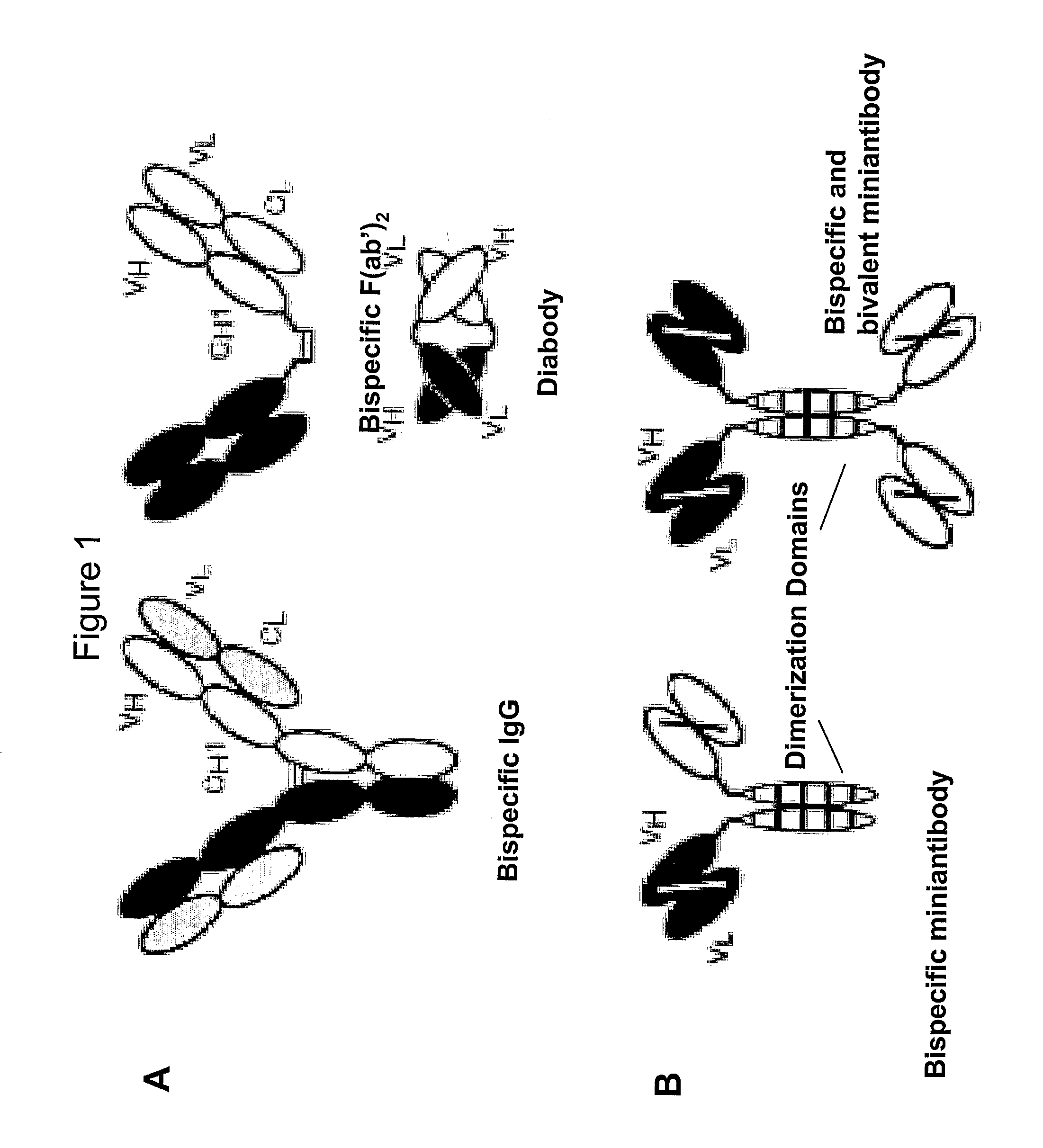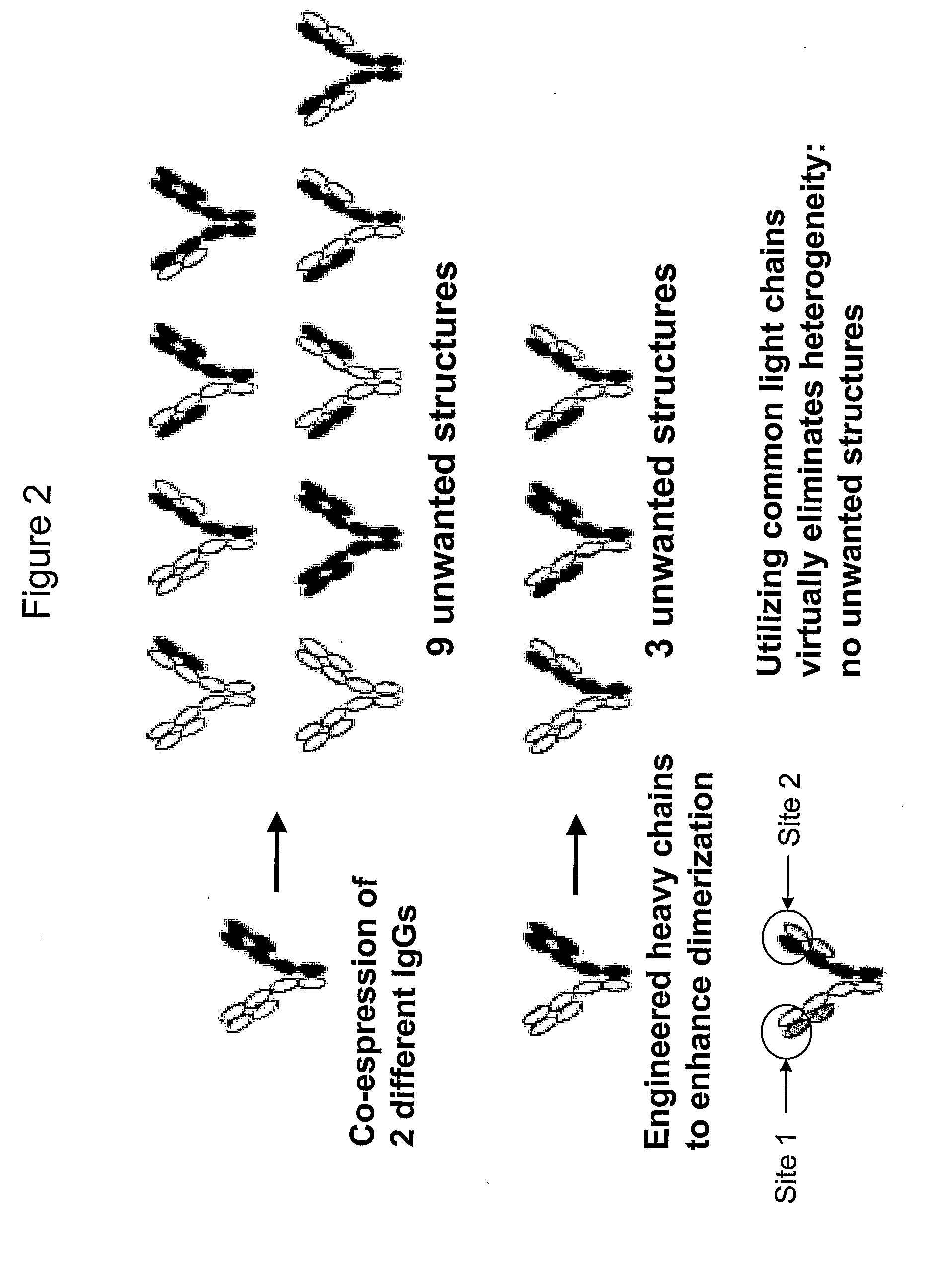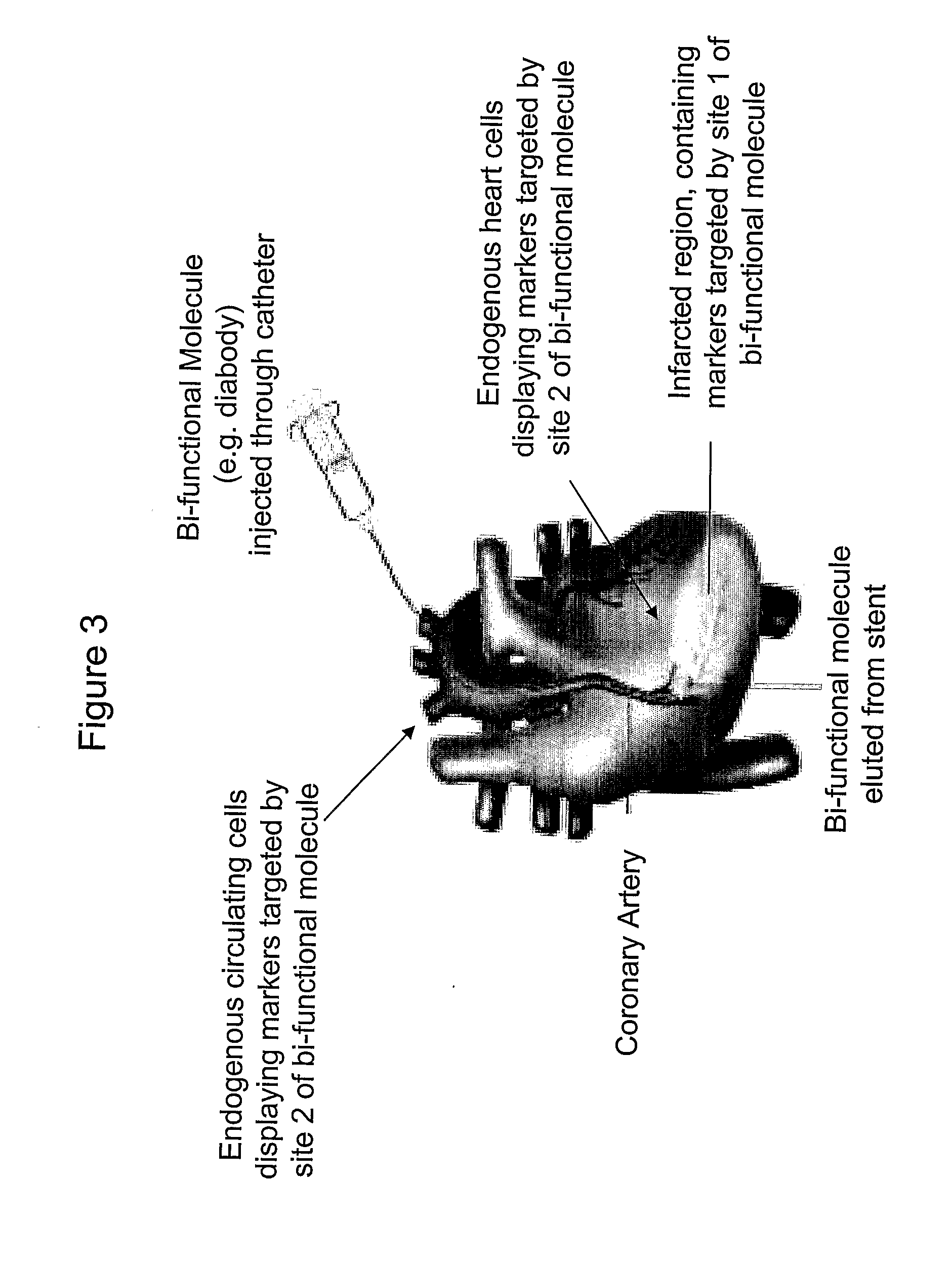Methods of treating and preventing acute myocardial infarction
a myocardial infarction and composition technology, applied in the field of myocardial infarction treatment and composition, can solve the problems of insufficient cardiomyocytes and/or vascular cells in the scar region, inability to treat and prevent myocardial infarction, and insufficient scar region, etc., to achieve the effect of improving the condition of a patient by reducing, alleviating, or reversing
- Summary
- Abstract
- Description
- Claims
- Application Information
AI Technical Summary
Benefits of technology
Problems solved by technology
Method used
Image
Examples
example 1
Differential cDNA Analysis
[0059]To target multivalent molecules to regions of ischemic or reperfusion injury in the heart, specific cell surface or extracellular markers are identified through the analysis of diseased human tissue in comparison with healthy tissue. Many conventional methods have been developed to detect differential expression of genes in the cardiovascular system, leading to identification of specific proteins of interest (reviewed in Napoli et al, Heart 89:597-604, 2003). These are typically based on comparisons of messenger RNA levels (sometimes in the form of cDNA) in healthy versus diseased tissue samples. Commercial databases are also available that provide such information (see U.S. Patent Application 2003 / 0129624).
[0060]Briefly, small samples of tissue are dissected from the hearts of human cadavers. One set of samples is taken from the left ventricular wall of a healthy heart. Other sets of samples are taken from the left ventricular wall of hearts that hav...
example 2
Multivalent Antibody Production
[0063]Multivalent antibodies are one type of multivalent molecule that is used in accordance with the principles of this disclosure. A bispecific antibody (diabody) displays high affinity binding and specificity for two different biological markers. The components for diabodies may be produced in a similar way as traditional monoclonal antibodies, e.g. in hybridomas (tissue culture cells that have been induced to produce a single antibody in vitro) or in engineered bacteria, and the components recombined in vitro to produce chimeric molecules Alternatively, a single hybridoma producing two different monoclonal antibodies are engineered whereby a fraction of the resulting antibodies are diabodies. For human clinical use, human or humanized antibodies are required to avoid the development of a human anti-mouse antibody response. Thus, human or humanized antibodies (Vaughan et al, Nat. Biotechnol. 16:535-539, 1998) are first be identified that recognize t...
example 3
Treatment of AMI in a Porcine Model
[0066]Female or castrated male juvenile hybrid farm swine, 10-16 weeks old and weighing 35+ / −10 kg, are utilized. Fasting is conducted prior to induction of anesthesia for device deployment, sample collection for serum chemistry and necropsy. Food, but not water, is withheld the morning of the procedure. To prevent or reduce the occurrence of thrombotic events, anti-platelet pharmacological therapy consisting of clopidogrel (75 mg per os [PO]) and acetylsalicylic acid (ASA; 325 mg, PO) is administered daily, with the exception of the implantation day, beginning at least 3 days prior to the scheduled procedure date.
[0067]Animals are tranquilized using intramuscular ketamine, azaperone or acepromazine and atropine. Anesthesia induction is achieved with propofol injected intravenously [IV] through a catheter in a peripheral ear vein. Upon induction of light anesthesia, the subject animal is intubated and supported with mechanical ventilation. Isoflura...
PUM
| Property | Measurement | Unit |
|---|---|---|
| Composition | aaaaa | aaaaa |
| Disorder | aaaaa | aaaaa |
Abstract
Description
Claims
Application Information
 Login to View More
Login to View More - R&D
- Intellectual Property
- Life Sciences
- Materials
- Tech Scout
- Unparalleled Data Quality
- Higher Quality Content
- 60% Fewer Hallucinations
Browse by: Latest US Patents, China's latest patents, Technical Efficacy Thesaurus, Application Domain, Technology Topic, Popular Technical Reports.
© 2025 PatSnap. All rights reserved.Legal|Privacy policy|Modern Slavery Act Transparency Statement|Sitemap|About US| Contact US: help@patsnap.com



